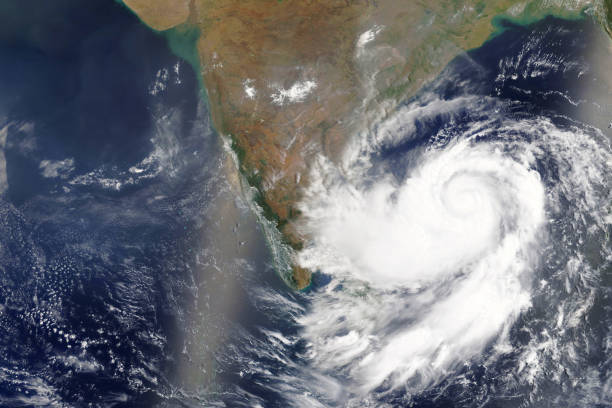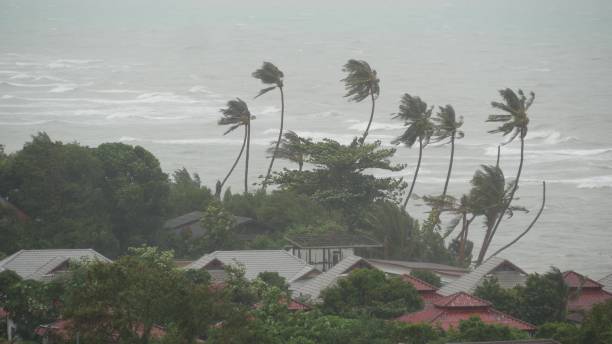The infrastructure impact of Cyclone Gabrielle, which battered New Zealand’s North Island last week, is becoming clear. A national state of emergency was declared last week – only the third in New Zealand’s history – after the heavily populated north-east coastal areas were battered by four days of high winds and heavy rainfall. The cyclone has left at least five people dead, 10,500 more displaced, and devastated infrastructure in regions such as Hawke’s Bay and Gisborne. Cyclone Gabrielle hit New Zealand just two weeks after unprecedented downpours and flooding in the same region, which killed four people. Last week, the city of Wellington was also struck by a 6.1 magnitude offshore earthquake. The cyclone’s impact has been seen on the country’s bridges and also on the City Rail Link (CRL) project in Auckland, which managed to avoid any major “lasting impacts”. Eight bridges on the east coast of New Zealand’s North Island have been washed away in heavy flooding caused by the cyclone and in many places communities have been cut off after raging floodwaters and debris led to bridge and road collapses. On Thursday, the east-coast city of Napier was left isolated engineers found damage to the Waitangi Bridge, the last bridge linking the town’s 65,000 people with the rest of the country. The national Transport Agency said the bridge had since reopened, but only for emergency services and critical workers. The other bridges that collapsed included Rissington Bridge, a bailey that washed away cutting off the remote community of Rissington. Footage also showed Brookfields Bridge over the Tutaekuri River, which connected parts of Hastings and Napier, succumbing to a large build up of debris in the swollen river. The others were Redclyffe Bridge, Dartmoor Bridge, Hawkston Road Bridge, Redcliffe Bridge, and Vicarage Road Bridge. At a news conference, prime minister Chris Hipkins said: “This is a traumatic event. It’s a very big challenge to restore infrastructure as fast as we can, but we have to acknowledge that we are in for a bumpy ride.

“The Severity And The Damage That We are Seeing Has Not Been Experienced in a Generation.”
Auckland’s CRL project managed to get through Cyclone Gabrielle and the earlier flooding event with minimal lasting impacts to the project. At the CRL construction sites, extensive flood response planning stood the project in good stead to withstand both the flooding and the cyclone, according to chief executive Sean Sweeney. The advance cyclone warning allowed CRL and Link Alliance crisis management teams to install additional measures, including dams erected in the Maungawhau/Mount Eden Station tunnels. Other measures included installation of extra bunds, pumps across all sites and the removal of plant and machinery to higher ground. There have been no reports of any significant flooding or wind related incidents across any sites as a result of Cyclone Gabrielle. At this stage there is no identified damage to infrastructure, permanent works or surrounding ground as a result of the flooding or the cyclone. “This is a direct result of the detailed planning for events such as Auckland has unfortunately recently undergone – the professionalism and bravery of CRL and Link Alliance workers has been tested and found equal to the task,” Sweeney said. “To maintain the highest standards of professionalism in the face of unprecedented flooding, while tunnels were being inundated, speaks to our people’s expertise and bravery.” The worst-affected site from Auckland Anniversary flooding was the city-bound cut-and-cover tunnel immediately south of the Maungawhau/Mount Eden Station temporary portal. The storm partially flooded these works and a mobile crane and several Elevated Work Platforms (EWPs) were inundated. “This area was pumped dry within 48 hours and the good news is that other than damage to a waterproofing layer behind a reinforced concrete wall, which we will replace, we haven’t identified any damage to the permanent works at this stage,” Sweeney said. Elsewhere across the CRL, stormwater flowed from the inundated portal area in the city bound tunnel northwards to the Karang-a-Hape Station (Karangahape). With the weir at the north end, this turned the entire station into a 100mm-deep reservoir. Sweeney said: “Our teams were able to move all but one item of plant to high ground and we were relatively unaffected, other than a general clean up. The bottom of our temporary access shaft at Mercury Lane is lower than the platforms and ended up about 1,000mm deep. Again, after pumping out, we identified no significant damage to the permanent works other than some blocked under-platform drainage that we are currently cleaning out.” Meanwhile, Te Waihoratiu Station (Aotea) was relatively unaffected with a minor inflow down the tunnel but stormwater did make its way to Waitemata (Britomart) Station through a combination of openings in the roof at Te Waihorotiu and from the main Waitemata train portal at the eastern end, nearest Vector Arena. Sweeney added: “Our partner Link Alliance has been supporting Auckland Transport by supplying pumps and labour to remove stormwater from the existing station.”


Recent Comments